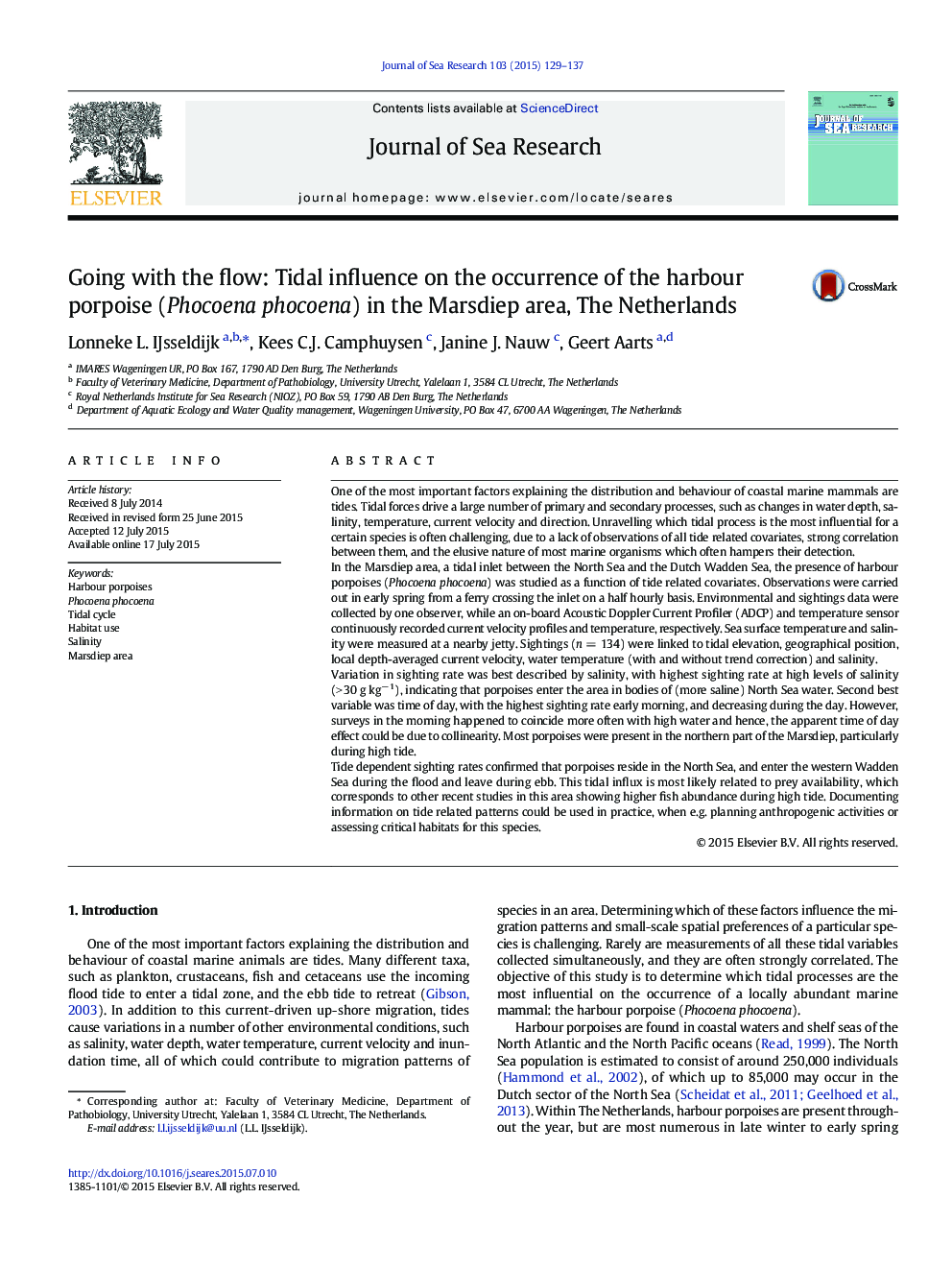| کد مقاله | کد نشریه | سال انتشار | مقاله انگلیسی | نسخه تمام متن |
|---|---|---|---|---|
| 6387300 | 1627471 | 2015 | 9 صفحه PDF | دانلود رایگان |

- Porpoise presence in the Marsdiep is studied as a function of tide related covariates.
- Sighting rate is best described by salinity with highest rate at high salinity level.
- This indicates that porpoises enter the area in bodies of saline North Sea water.
- Other studies have shown a higher fish abundance during high tide.
- Therefore, tidal influx of porpoises is most likely related to prey availability.
One of the most important factors explaining the distribution and behaviour of coastal marine mammals are tides. Tidal forces drive a large number of primary and secondary processes, such as changes in water depth, salinity, temperature, current velocity and direction. Unravelling which tidal process is the most influential for a certain species is often challenging, due to a lack of observations of all tide related covariates, strong correlation between them, and the elusive nature of most marine organisms which often hampers their detection.In the Marsdiep area, a tidal inlet between the North Sea and the Dutch Wadden Sea, the presence of harbour porpoises (Phocoena phocoena) was studied as a function of tide related covariates. Observations were carried out in early spring from a ferry crossing the inlet on a half hourly basis. Environmental and sightings data were collected by one observer, while an on-board Acoustic Doppler Current Profiler (ADCP) and temperature sensor continuously recorded current velocity profiles and temperature, respectively. Sea surface temperature and salinity were measured at a nearby jetty. Sightings (n = 134) were linked to tidal elevation, geographical position, local depth-averaged current velocity, water temperature (with and without trend correction) and salinity.Variation in sighting rate was best described by salinity, with highest sighting rate at high levels of salinity (> 30 g kgâ 1), indicating that porpoises enter the area in bodies of (more saline) North Sea water. Second best variable was time of day, with the highest sighting rate early morning, and decreasing during the day. However, surveys in the morning happened to coincide more often with high water and hence, the apparent time of day effect could be due to collinearity. Most porpoises were present in the northern part of the Marsdiep, particularly during high tide.Tide dependent sighting rates confirmed that porpoises reside in the North Sea, and enter the western Wadden Sea during the flood and leave during ebb. This tidal influx is most likely related to prey availability, which corresponds to other recent studies in this area showing higher fish abundance during high tide. Documenting information on tide related patterns could be used in practice, when e.g. planning anthropogenic activities or assessing critical habitats for this species.
Journal: Journal of Sea Research - Volume 103, September 2015, Pages 129-137